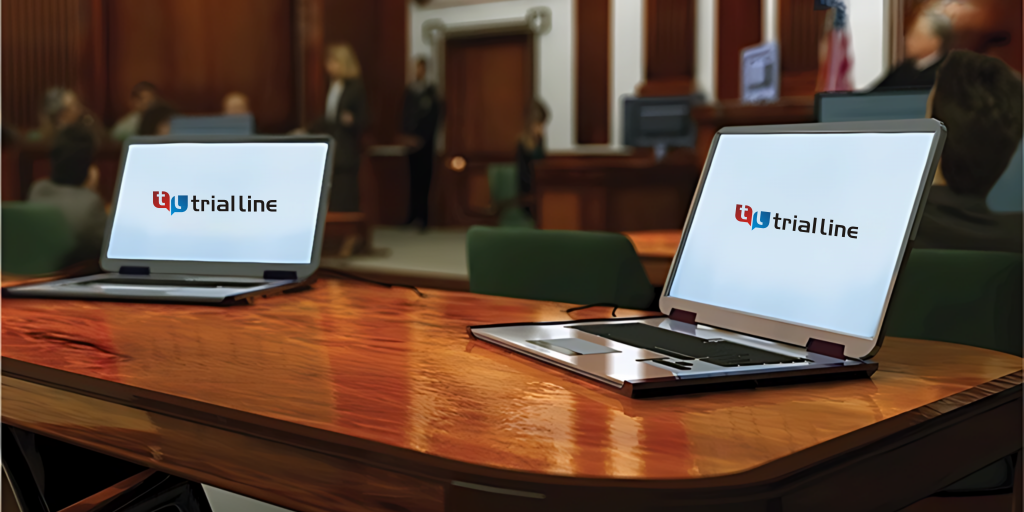Multimedia in trial presentations enhance understanding.
Multimedia in trial presentations enhance understanding.
Blog Article
How Trial Presentations Enhance Your Argument and Persuade Jurors
Trial presentations function as a critical mechanism for enhancing legal disagreements and encouraging jurors. By incorporating visual aids, narrative structures, and emotional engagement, lawyers can develop an engaging situation that resonates on multiple degrees. The critical use visuals not just clears up complicated information but also records jurors' interest a lot more efficiently than words alone. However, the art of storytelling plays a similarly vital role in changing valid evidence into an engaging story, shaping jurors' perceptions - trial presentations. Recognizing these aspects can considerably influence test end results, increasing the question of just how each part adds to this intricate dynamic.

Importance of Aesthetic Help
Visual help play a crucial duty in improving the effectiveness of trial discussions, as they can substantially increase audience involvement and retention of info. In the context of a trial, where jurors are entrusted with processing complex details, visual help serve to simplify and clear up crucial points. Graphes, graphs, and photos can communicate information and ideas that may or else overwhelm or perplex jurors, enabling a more simple understanding of the evidence offered.
Furthermore, aesthetic aids assist in maintaining juror interest throughout the proceedings. By damaging the monotony of verbal testament, these tools can stress essential arguments, making them extra unforgettable. Reliable visual aids can also stimulate psychological feedbacks, which can be critical in persuading jurors to line up with the speaker's narrative.

Crafting Compelling Stories
A compelling narrative is important in test presentations, as it works as the foundation of effective persuasion. It permits attorneys to weave together realities, evidence, and emotional aspects right into a meaningful tale that reverberates with jurors. This narrative structure allows jurors to recognize the intricacies of the case while assisting them via the attorney's disagreement.
To craft a compelling narrative, attorneys ought to focus on clarity and comprehensibility. Furthermore, the use of vibrant descriptions can create mental images that help jurors visualize the events, making the narrative more remarkable.
In addition, incorporating vital motifs throughout the discussion strengthens the core message and help in retention - trial presentations. The narrative ought to not only convey details yet additionally stimulate a feeling of justice, highlighting the risks included. Eventually, a well-constructed narrative cultivates a link between the jurors and the case, placing the attorney's argument as both legitimate and engaging, therefore raising the probability of a positive decision

Involving the Jury Emotionally
Effective court engagement hinges on the lawyer's ability to link with jurors on an emotional level. This link can significantly affect jurors' perceptions and their supreme decision-making.
Aesthetic aids, such as photographs or video clips, can better enhance psychological involvement, offering jurors with dazzling depictions of the case's human aspects. Crafting a narrative that highlights the battles and accomplishments of the individuals involved ensures that jurors see beyond the legal debates and recognize the human effects of their choices.
In read this addition, tone and body language play an important role in communicating feeling. An attorney's enthusiastic distribution can reverberate with jurors, reinforcing their emotional investment in case. It's essential to balance emotional appeals with accurate evidence, making sure that jurors really feel urged to act while continuing to be based in the fact. Ultimately, an emotionally involved court is a lot more most likely to be persuaded, making emotional link a crucial component of efficient trial presentations.
Structuring Your Presentation

The body of the discussion must be practically fractional into key factors, each supported by compelling proof. It is useful to use narration methods to weave realities right into a narrative that jurors can conveniently comply with. Visual help, such as graphes and videos, can boost comprehension and involvement, assisting to highlight crucial items of evidence.
Real-World Study
Analyzing real-world study provides very useful insights right into the art of trial presentations and persuasion. The landmark situation of "O.J. Simpson v. The Individuals of California" highlights how aesthetic help and compelling stories can sway jury assumptions. The defense team effectively used a technique that incorporated high-profile professional testaments with multimedia presentations, which mesmerized jurors and inevitably affected their decision.
One more remarkable example is the "McDonald's Coffee Case," where the plaintiff's attorneys used visuals pictures of the injuries received by Stella Liebeck. trial presentations. This raw aesthetic proof played an important function in communicating the intensity of her burns, view publisher site bring about a substantial jury award. Such situations demonstrate that impactful trial presentations typically pivot on the efficient combination of visuals and storytelling to evoke emotional reactions from jurors
Additionally, the "Casey Anthony Trial" highlighted the importance of narrative coherence and trustworthiness. The prosecution's failing to develop an engaging timeline reduced their convincing power, highlighting the requirement of a well-structured presentation. Analyzing these instances discloses that effective trial presentations call for critical preparation, emotional engagement, and the capacity to reverberate with jurors' worths and beliefs.
Conclusion
Test presentations substantially enhance debates and persuade jurors via the tactical usage of visual help, engaging stories, and emotional involvement. A well-structured presentation equilibriums emotional allures with accurate proof, inevitably reverberating with jurors' values.
Report this page